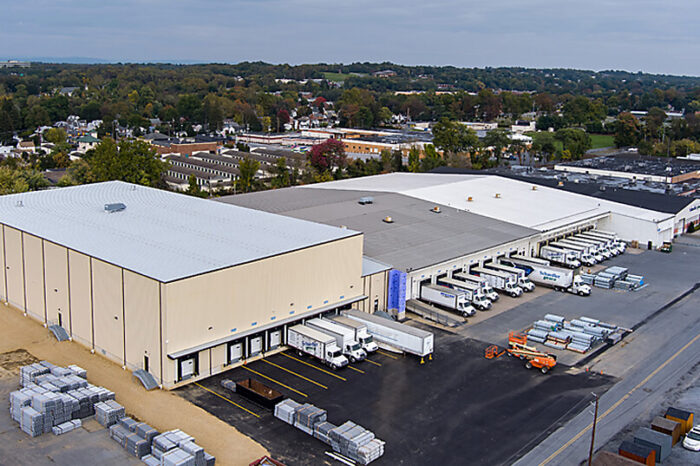Warehouse and Purchasing Considerations as Distributors Comeback

As business begins to improve and distributors reopen counters and bring back some staff, questions arise regard purchasing, staffing, warehouse management and “operations” in general. While business for many is operating at a reduced level, the acceleration of business can create disruption … especially after a significant slowdown over 45-60 days.
Dick Friedman, an operations consultant who has worked with a number of electrical distributors, shares some thoughts:
Everyone knows that during this lock down most distributors are suffering from reduced sales, and consequently are operating with less, staff, remotely working personnel and perhaps part-time or split shifts in the warehouse. However, hope is on the horizon, but re-opening “to full capacity” should not be a rushed process of bringing everyone back to work once and, given the sales decline and your outlook, purchasing inventory that your computer system suggests could result in excess or insufficient stock. (Note: The Channel Marketing Group / DISC 3rd COVID survey report highlighted that a significant percentage of distributors had already reduced their inventory.) Nor should everyone working from home be brought back into the office. Here are some suggested guidelines for opening in a way that does not cause chaos in the office and warehouse nor requires inventory investment.
Quotations, Sales Order Entry and Customer Service
Even before the virus struck many non-distribution companies required or allowed some employees to work from home. Studies of this arrangement revealed that home workers were more productive and accurate than on-site workers with the same responsibilities and tasks. The time not spent commuting allowed these tele-commuters to adjust their schedules so that they could do more in the same or less time than had been spent at the office. And before the lock down many did not have to worry about schooling, or entertaining, their children during the day, and so concentrated on their work. The money not spent on commuting resulted in happier employees, who were more dedicated to doing a great job; a financial and emotional bonus for those with infants was that they no longer had to spend money on a babysitter nor worry. Obviously, employers benefited from increased productivity and accuracy, but they also saved some money by reducing in-office costs of supporting the tele-commuters.
Many distributors have implemented telecommuting during the lock-down, for quotations, sales order entry and customer service. And once home-confinement ends every distributor should consider continuing telecommuting for at least some of those now doing it. But doing it right means investing in secure, efficient, fast remote computer and telephone capabilities, including the ability for a telecommuter to access all authorized ERP system functions; and the ability for one telecommuter to instantaneously contact another employee (e.g., contact an on-site warehouse worker to check inventory; contact another telecommuter with an extraordinary question about special purchasing). And doing it right on a continuing basis means setting goals for telecommuters and monitoring their performance. Those distributors who have not used telecommuting should investigate its costs and benefits for the distributorship.
Purchasing and Inventory Management…
..are treated separately because quickly filling orders has taken priority over order-filling accuracy and keeping on-hand data up to date and correct. Although some distributors use at-home purchasing agents and inventory managers, many require these functions to remain on-site because of the need to walk into the warehouse (or outside yard, for some) and check stock, look for product receipts not yet entered into the system, etc. This is especially so for purchasing personnel working with computer-generated suggested buying displays/reports. Even when warehouse and data accuracy are back to traditional levels (which may or may not be high enough), these functions are likely to remain on-site. (CMG Comment – Some companies are reportedly considering “supplier relations” management working remotely as it decreases “drop in supplier-driven interruptions.”)
In the Warehouse
Before bringing “furloughed” warehouse workers back, consider augmenting your existing staff with only a few people initially to help with putting away any items on pallets or in boxes clogging the aisles, and otherwise straighten out shelves, pallet racks, etc.; perhaps on a weekend or at night – at premium pay if necessary. If the ERP system contains a function for recommending where to store products, do not use it unless there is a way to ignore data points that represent activities that occurred during the period when sales significantly depressed; else the recommendations will be incorrect. If possible, right after the warehouse is straightened out, conduct a physical inventory, and adjust system data so accurate quantities are stored. Careful: do not adjust quantities on hand without first looking everywhere for the “missing” quantities; and if the system shows too much, check inventory history to determine if a similar item was actually sold instead of the item with excess quantity on hand.
Some distributors have not accepted returns while their warehouse workers were sheltering-in-place, but hopefully have used their ERP systems to record data on customers who want to return items and the specific items. In getting ready for accepting returns, determine if the current returns area is sufficient to accommodate much more than usual; if not, define a larger but contiguous area. And determine if people know how to use the ERP system to record data as returns come in, and track the location where items are stored for evaluation (as to sale-ability vs. returning to a manufacturer vs. scraping).
Purchasing
As sales increase to pre-pandemic levels, do not use the system-forecasted quantities to buy unless there is a way to ignore data points that represent sales that occurred during the periods when sales were depressed; else the recommended quantities to buy will be too small. Some ERP systems allow the user to define the periods of data to use, which should be done. Regardless of which data is used in forecasting, very knowledge purchasing people must review the system-recommendations, and if necessary, change the quantities in the data that would be transformed into a purchase order. This process of defining the periods of data to use should continue until there is 6 months of “normal” sales, and even then, set a parameter to look back no more than 6 months; watch out for seasonal forecasting, which is likely to require manual adjustment.
________________________
About the author
Dick Friedman is a experienced expert on inventory management, and warehouse management, technology operations for distributors. He is a Certified Management Consultant and is objective and unbiased. Dick applies more than 30 years of experience and unique checklists to help distributors prevent warehouse mistakes and by helping prevent inventory shortages. For a FREE consultation or more information go to www.GenBusCon.com.






















